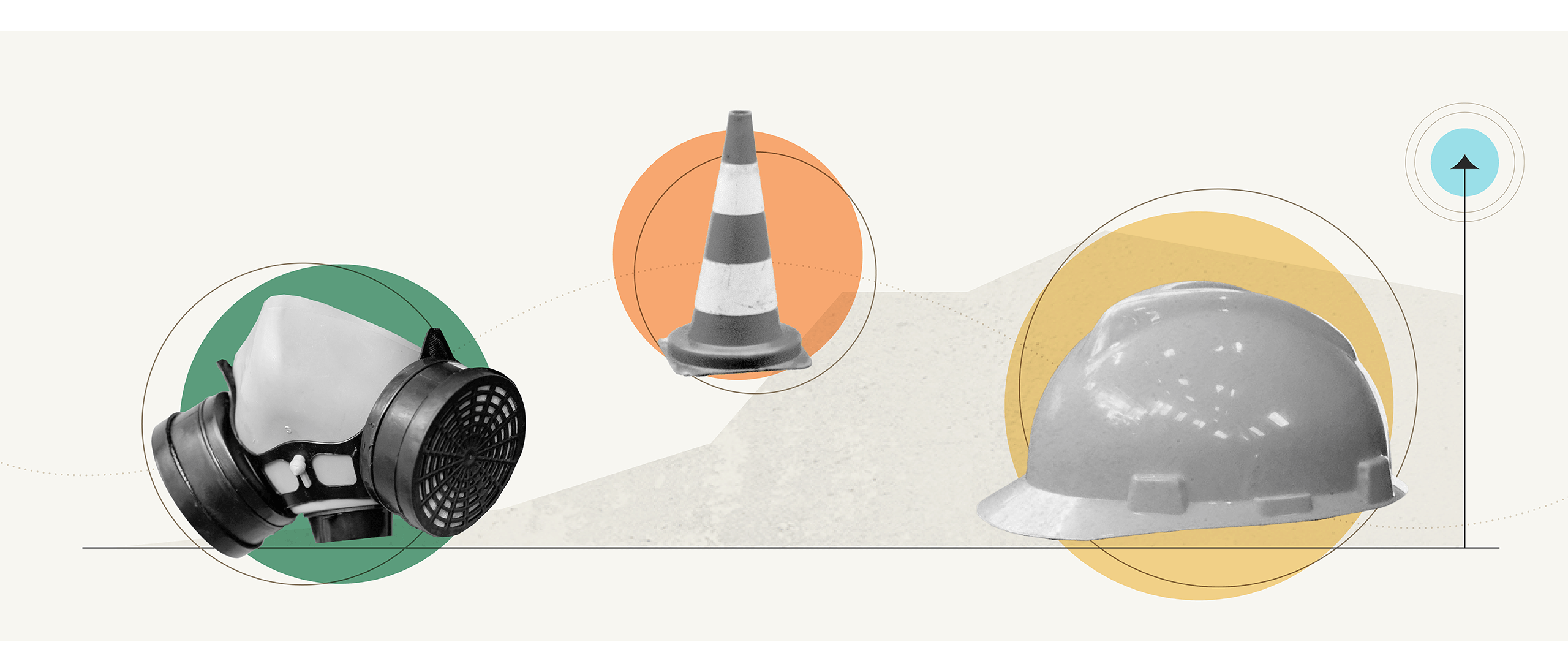10 Tips for Setting and Measuring Workplace Safety Goals
June is National Safety Month, annually sponsored by the Centers for Disease Control and Prevention to highlight efforts to prevent injury “in the workplace and any place.” At Mineral, helping our small business clients protect and maintain workplace safety is a key pillar to delivering on our mission to Elevate teams every day. In honor of National Safety Month, this post is the second in a multi-part series to aid small businesses in building and expanding a culture of safety.
Every business, from a coffee shop to a construction firm, believes in the mantra “Safety first.” That’s the easy part! However, what workplace safety looks like—with clear expectations, policies, measurement, and accountability—is just a little more complicated. To maintain a safe and productive workplace, small businesses must set formal workplace safety goals and measure performance, as you would any other business objectives.
Establishing safety goals gives a company direction and sparks employee motivation toward the same objectives. They prioritize employees’ time and energy on key activities that, along the way, drive them to develop habits that organically build a culture of safety. A key first step to goal setting is defining what you want. Once you know what good safety performance looks like, you can set parameters for achieving safety success that don’t just rely on luck or hope alone. Here are 10 tips for setting and effectively measuring workplace safety goals:
1. Involve key stakeholders. Getting input from your team is critical to increase engagement in the safety program. Ask those who are in the trenches about what barriers exist to achieving safe work performance. Not only will this help identify where the gaps are, it will also help create buy-in once the expectations and accountabilities are established.
2. Identify specific safety hazards, risks, and other areas for improvement. If something were to go wrong, what types of injuries are likely to occur? Slips and falls, cuts, back injuries and strains and sprains are common injury types across many industries. So of course consider reducing/eliminating these as part of goal-setting, but also think about the hazards that are most prevalent in your specific work environment and how you can prevent incidents from occurring. What are the behaviors that you want employees to practice? What controls and systems do you want employees to use so that incidents are prevented? Establish goals related to the prevention and control of the most common hazards and risks that employees face in their work environment.
3. Align your safety improvement goals with your company mission and more specifically, your safety mission. Your safety improvement goals should bring your whole team together toward a common goal: Preventing injuries and creating a safe and healthy work environment for employees, customers, and the community.
4. Choose leading indicators. A lot of companies measure safety by the number of OSHA recordable incidents that have occurred over a period of time. However, this is a lagging indicator—one that is helpful in identifying where improvements are needed after incidents have already occurred. But lagging indicators don’t reveal the whole picture about organizational safety. Too often, companies are able to achieve zero recordable injuries even though employees have had numerous first aid incidents, close calls, unsafe conditions or possibly even incidents that should have been recorded but weren’t.
Instead, when setting workplace safety goals, it’s more useful to use leading indicators—forward-looking measures that track activities and conditions that lead to positive safety outcomes.
5. Set SMART goals. The best way to articulate and manage your safety outcomes is to make sure your goals are SMART: Specific, Measurable, Achievable, Relevant, and Time bound. Some examples:
- Conduct one safety training per month.
- Post safe-work instructions for all tasks by the end of Q1.
- Communicate safety activities and improvement plans quarterly.
- Close 80% of all reported hazardous conditions within 30 days of submission.
- Achieve 50% employee participation on safety teams within one year.
6. Develop an action plan. Outline the specific steps needed to achieve each milestone, who is accountable for each action, and deadlines for completion. Then make action plans transparent to all relevant stakeholders so that progress is visible and tracked to completion.
7. Tie safety SMART goals to employee performance metrics. Organizational goals require a team effort to achieve, and each team member should understand how they contribute toward successful safety performance. By tying safety metrics to individual performance goals, companies can effectively align employees’ efforts with organizational objectives. Be sure employee goals also follow the SMART model.
8. Solicit and provide feedback. Review progress toward goals in a timely manner. Ensure two-way communication so that any barriers to achieving goals can be brought forward by the responsible person and feedback about progress can be provided back to affected stakeholders. Effective communication is a key element to building a strong culture and ultimately achieving the desired outcomes.
9. Celebrate your wins. Celebrate when safety goals are achieved and recognize the efforts of employees who contributed to the success. Reinforcing the behaviors and actions that led to the company’s success is a powerful way to increase momentum and motivation within an organization. Celebrating milestones can also create a sense of camaraderie and team spirit amongst employees.
10. Evaluate and adjust. Review progress at regular intervals so your team can offer feedback and adjust action plans as needed for your workplace safety goals to remain relevant and achievable. However, resist the temptation to move goal lines too frequently, keeping in mind the A in the SMART model doesn’t mean ambitious, but rather achievable.
Up next: Using Risk Assessment to Design a Workplace Safety Program.


